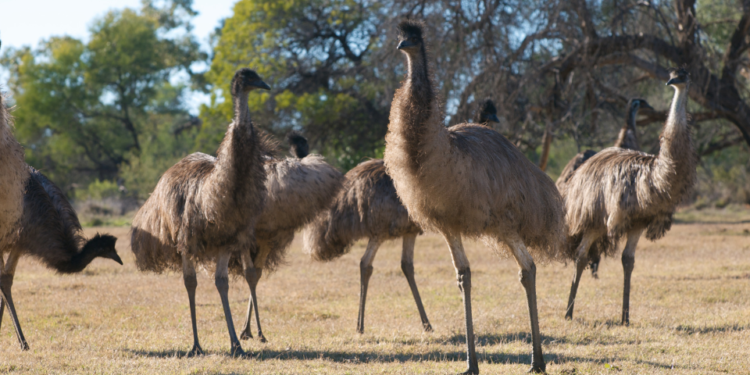Introduction: In the annals of military history, there exists a peculiar chapter that often evokes both laughter and bewilderment: The Great Emu War of 1932. Yes, you read that right – a war against birds. In a bizarre turn of events, Australia found itself in a conflict with its feathered inhabitants, the emus, leading to one of the most unusual episodes in warfare. Let’s delve into this fascinating tale of human-animal conflict and its unexpected outcome.
The Backdrop: The early 1930s were challenging times for Australia’s agricultural sector. The aftermath of World War I had left many soldiers unemployed, prompting the government to offer land grants for farming. However, the Wheat Belt region of Western Australia, where many veterans settled, faced a unique problem: an explosion in the emu population.
Emus, large flightless birds native to Australia, descended upon the farmlands in search of food, particularly during their seasonal migration. Unfortunately for farmers, these curious and hungry birds wreaked havoc on crops, devouring valuable wheat and barley fields with remarkable efficiency. Faced with mounting losses and desperate for a solution, the farmers turned to the government for assistance.
The Declaration of War: In response to the farmers’ pleas, the Australian government made an unprecedented decision – they declared war on the emus. In November 1932, Major G.P.W. Meredith of the Royal Australian Artillery was dispatched with military personnel armed with Lewis guns and orders to cull the emu population.
The Campaign Begins: Armed with machine guns and high expectations, the military set out to confront the emu menace. However, they quickly discovered that their formidable weapons were ill-suited for the task at hand. Emus, it turned out, were remarkably agile and elusive targets, capable of outrunning their human adversaries with ease.
The soldiers soon found themselves engaged in a futile game of cat and mouse, chasing after the birds across the vast and rugged terrain of the Australian outback. Despite their best efforts, the emus proved to be formidable opponents, scattering and evading capture with each encounter.
The Outcome: As weeks passed and casualties mounted – not among the emus, but among the soldiers’ morale – it became increasingly clear that the campaign was doomed to failure. The Lewis guns proved ineffective against the swift and agile birds, and the military’s efforts to stem the emu tide proved futile.
In the face of mounting public ridicule and growing disillusionment, the government was forced to acknowledge defeat. In December 1932, just one month after the campaign began, Major Meredith withdrew his troops, bringing an end to what would later be dubbed “The Great Emu War.”
Conclusion: The Great Emu War stands as a testament to the unpredictability of warfare and the resilience of nature. What began as a seemingly straightforward solution to a pressing agricultural problem quickly devolved into a farcical and ultimately unsuccessful military campaign. Today, the story of Australia’s battle against its feathered foes lives on as a quirky footnote in history, reminding us that sometimes, even the best-laid plans can go awry in the most unexpected ways.



















































